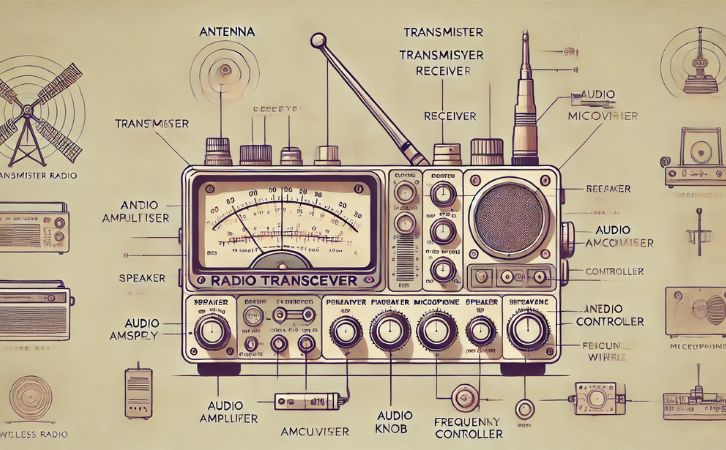Radio stations operating in the AM (Amplitude Modulation) band typically use frequencies in the kilohertz (kHz) range. Here’s a detailed breakdown:
1. AM Radio Frequency Range
Global AM Broadcast Band:
AM radio stations generally operate between 535 kHz to 1605 kHz (as per ITU allocations in many regions) .
North America: The AM band extends from 530 kHz to 1700 kHz, with the upper segment (1600–1700 kHz) reserved for expansion and Travelers’ Information Stations (TIS) .
Europe/Asia: Some regions use a narrower range (e.g., 531–1602 kHz) with 9 kHz spacing between channels instead of 10 kHz .
Channel Spacing:
In the Americas, AM stations are spaced 10 kHz apart (e.g., 540. 550. 560 kHz) .
Elsewhere, 9 kHz spacing is common (e.g., 531. 540. 549 kHz) to reduce interference .
2. Examples of AM Radio Station Frequencies
Specific kHz values for AM stations vary by location but follow the allocated bands:
- 600 kHz: Used by stations in Alaska, California, Florida, and other U.S. states .
- 750 kHz: Common for news/talk stations like WSB-AM in Atlanta.
- 1600 kHz: Reserved for expansion stations in the U.S. (e.g., emergency broadcasts) .
3. FM Radio and Higher Frequencies
- FM (Frequency Modulation) stations operate in the megahertz (MHz) range (88–108 MHz), far above the kHz spectrum .
- Shortwave and HF Bands: Some international broadcasts use kHz frequencies (e.g., 3–30 MHz), but these are not standard AM/FM stations .
4. Technical Context
kHz in Radio Waves:
1 kHz = 1.000 cycles per second. AM radio’s lower frequency (kHz range) allows longer wavelengths (e.g., 300 km at 1 kHz), enabling regional coverage but with susceptibility to interference .
FM’s higher frequency (MHz range) provides better sound quality but shorter range .
5. Regulatory Allocations
U.S. FCC/International ITU:
The 535–1605 kHz band is reserved for AM broadcasting globally, with variations for regional needs .
For example, the U.S. expanded its AM band to 1700 kHz in the 1990s to accommodate more stations .
Summary
AM Radio: Operates in kHz (typically 530–1700 kHz in the Americas, 531–1602 kHz elsewhere).
FM Radio: Uses MHz (88–108 MHz) and is unrelated to kHz allocations.
Channel Spacing: 9 kHz or 10 kHz depending on region.
For precise station frequencies, consult local regulatory databases like the FCC (U.S.) or Ofcom (UK).

